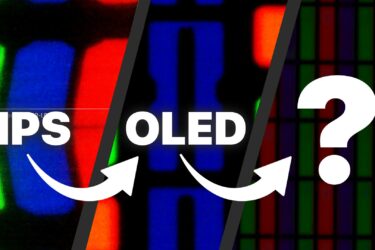AMD Ryzen Z1 vs Ryzen Z1 Extreme – 44% Gain Makes the “Extreme” Name Deserved

The AMD Ryzen Z1 and Z1 Extreme processors are the heart of the wave in handheld gaming, offering PC-quality performance in a portable form factor.
The top handheld gaming consoles, ASUS ROG Ally (in-depth review) and Lenovo Legion Go (in-depth review), feature these processors. If you’re considering a portable console, you might be curious about the differences between the two chips.
While we’re preparing a detailed comparison of the ROG Ally and Legion Go, let’s first examine their processors more closely. The Ryzen Z1 Extreme sounds more powerful than the Z1, but what does that really mean?
Specs Sheet
Here’s a straightforward technical comparison of the two CPUs’ specs. The Z1 Extreme offers 33% more cores and threads, triple the graphics cores, 9% more cache, and a slightly higher frequency.
| AMD Ryzen Z1 | AMD Ryzen Z1 Extreme | |
|---|---|---|
| Cores / Threads | 6/12 | 8/16 |
| AMD RDNA 3 Compute Units | 4 | 12 |
| L2 + L3 Cache (MB) | 22 | 24 |
| TDP (W) | 9-30W | 9-30W |
| Base Clock | 3.2 GHz | 3.3 GHz |
| Max. Boost Clock | Up to 4.9 GHz | Up to 5.1 GHz |
| Graphics Core Count | 4 | 12 |
Turns out that the Z1 Extreme is *almost* identical to the Ryzen 7840U we’ve tested in full-fledged laptops like the Acer Swift Edge. Yes, it’s not a gaming machine but putting its power in a 7-inch chassis is more than impressive. On the other hand, the non-Extreme Z1 is *almost* identical to AMD Ryzen 5 7540U.
| Specifications | AMD Ryzen Z1 | AMD Ryzen 5 7540U | AMD Ryzen Z1 Extreme | AMD Ryzen 7 7840U |
|---|---|---|---|---|
| AMD XDNA Architecture | No | No | No | Yes |
| Cores/Threads | 6/12 | 6/12 | 8/16 | 8/16 |
| Base Clock | 3.2 GHz | 3.2 GHz | 3.3 GHz | 3.3 GHz |
| Boost Clock (up to) | 4.9 GHz | 4.9 GHz | 5.1 GHz | 5.1 GHz |
| Cache | 22MB | 22MB | 24MB | 24MB |
| TDP | 9-30W | 15-30W | 9-30W | 15-30W |
| RDNA 3 Compute Units | 4 | 4 | 12 | 12 |
So…what are the differences? AMD has just used the same chips by tweaking them for handheld use by disabling the XDNA AI unit for the Z1 Extreme and adjusting the voltage curves. Z1 and Z1 Extreme can lower their TDP to 9W and that makes the battery life longer.
Both Z1 variants boast the same 4nm manufacturing process and support for AMD’s impressive upscaling technologies like FidelityFX Super Resolution (FSR) and Radeon Super Resolution (RSR). These can help bridge the gap between the two processors by allowing the Z1 chips to render games at a lower resolution and upscale them to a higher resolution, improving performance without sacrificing visuals as much.
Gaming Benchmarks
Now, the real talk. The table below features 10 titles and the average FPS in tests conducted by AMD. The graphics settings are set on the Lowest details, except for CS:GO.
| Game | AMD Ryzen Z1 | AMD Ryzen Z1 Extreme |
|---|---|---|
| Red Dead Redemption 2 | 25.3 FPS | 47.9 FPS (+89%) |
| Borderlands 3 | 40.5 FPS | 57.7 FPS (+42%) |
| CS:GO (Highest Details, FXAA) | 137.6 FPS | 162.1 FPS (+18%) |
| Grand Theft Auto V | 84.8 FPS | 89.3 FPS (+5%) |
| Company of Heroes 3 | 33.4 FPS | 60.0 FPS (+80%) |
| Forza Horizon 4 | 83.3 FPS | 121.7 FPS (+46%) |
| Shadow of the Tomb Raider | 39.0 FPS | 73.0 FPS (+87%) |
| Far Cry 6 | 34.3 FPS | 51.0 FPS (+49%) |
| Middle Earth: Shadow of War | 51.7 FPS | 64.7 FPS (+25%) |
| DOTA2 | 100.0 FPS | 102.0 FPS (+2%) |
AMD Ryzen Z1 Extreme is 44% more powerful, on average.
Verdict
The AMD Ryzen Z1 Extreme lives up to its name. With its extra cores and graphics muscle, it delivers a significant performance bump over the Z1. This translates to smoother gameplay, especially in demanding titles.
However, the Z1 remains a compelling option for budget-conscious gamers who can utilize upscaling technologies to partially offset the performance gap. With that said, the price gap between the ROG Ally configurations with Z1 and Z1 Extreme is currently between 10 and 20%, while the performance gain of the Extreme variant is more than 40%, so our opinion is that getting the Z1 Extreme is the right choice.
All devices with AMD Ryzen Z1:
All devices with AMD Ryzen Z1 Extreme:












